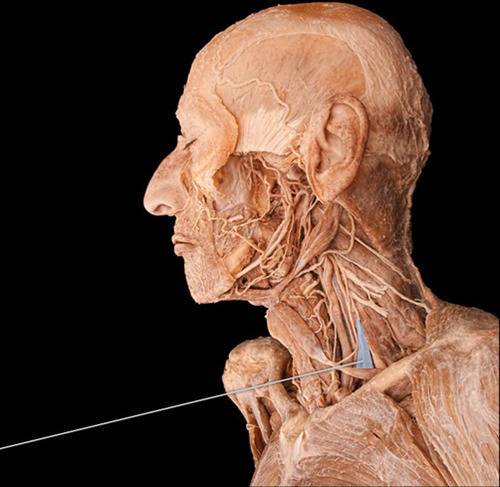
Biology, 15.07.2019 11:00 Jackiebear4593
Does the highlighted muscle flex the neck to the same side or to the opposite side

Answers: 1


Another question on Biology

Biology, 21.06.2019 18:30
Drag each label to the correct location on the image. each label can be used more than once. a scientist introduced mutations in a gene sequence isolated from bacteria. study the sequence, and identify the steps where the mutations may affect the formation of proteins. in the sequence, black letters stand for protein coding regions and red letters stand for noncoding regions. protein will not be changed. protein may be changed. attcgtgttc atcgtgttc atcgtattc attcgtattc
Answers: 1

Biology, 22.06.2019 13:00
Astudy by solloch and et. al., in 2017, gives the map above which shows the frequency of alleles with a ccr5-delta32 mutations over 87 different countries. this mutation deletes the presence of a co-receptor (ccr5) on the outside of human t-cells (lymphocytes). some viruses, such as the one responsible for the black death and human immunodeficiency virus (hiv), require this receptor for attachment to host cells during the infection process. the black death was an epidemic that passed over northern europe during the 14th century killing nearly 60% of europeans. according to this information, which explanation best explains why northern europeans show a greater immunity for hiv than some other parts of the world?
Answers: 1

Biology, 22.06.2019 15:30
The most effective way to provide children with safety messages is to
Answers: 3

Biology, 22.06.2019 16:30
You will create a molecular clock model for an arthropod gene. follow these guidelines to make your model: . your timeline will span from 90 million years ago to the present. the common ancestor in your model is an arthropod that lived 90 million years ago. the gene that you'll track codes for a protein in the species venom . the dna sequence youll track contains 10 nitrogen bases. you can choose the order of the bases and where the mutations occur. this gene mutates at a rate of approximately 0.76 base pairs every 17.1 million years. to build your model,/ calculate the estimated time period it takes for 1 base pair to mutate. the first time period will only show the common ancestor. at the beginning of the second time period, three lineages will diverge from the common ancestor, each with a different mutation in their gene sequences. the first and third descendant species will survive for the rest of the timeline. the second descendant species was extinct 50 million years ago. calculate how long it will take for one full base pair mutation to occur. explain your reasoning by constructing a mathematical equation
Answers: 2
You know the right answer?
Does the highlighted muscle flex the neck to the same side or to the opposite side...
Questions





Physics, 23.07.2020 19:01

Mathematics, 23.07.2020 19:01




Computers and Technology, 23.07.2020 19:01




Geography, 23.07.2020 19:01


Mathematics, 23.07.2020 19:01




Biology, 23.07.2020 19:01




